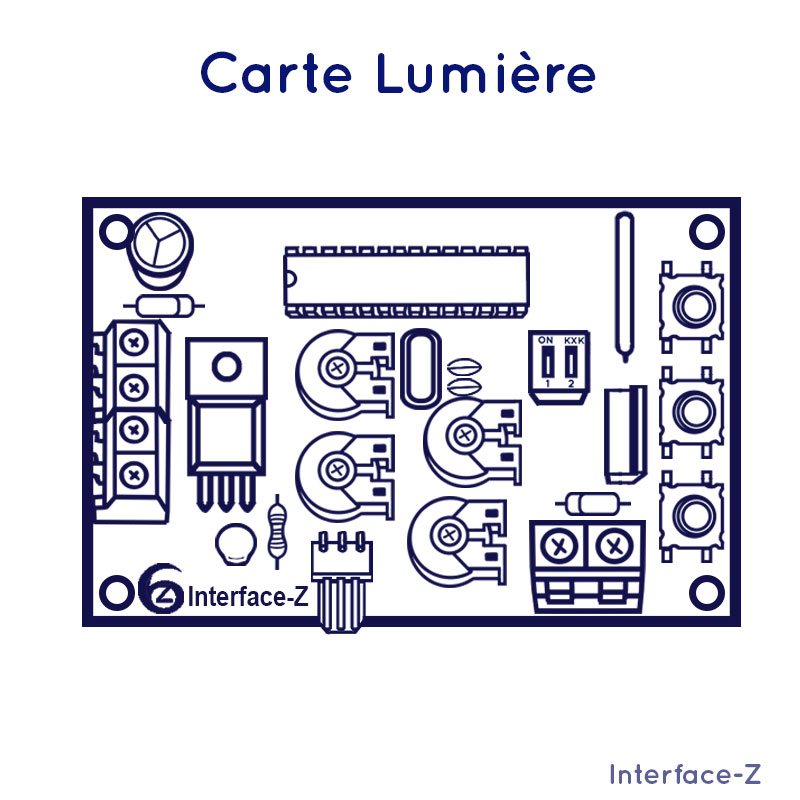









It manages interactive devices.
Brand: Interface-Z
Reference: aut-lum
A visitor passes in front of a sensor, and a lamp lights up, gently illuminating an object and turning off when the visitor leaves. This type of interactivity can be implemented with various sensors, either contactless or haptic, and with low-voltage actuators. For example, a Proximity sensor detects the approach of a visitor, or a touch-sensitive mat locates them, or a hand brushes against a capacitive sensor antenna. The actuator can be an LED strip, a colored bulb, a vibrating motor, or a geared motor creating a dynamic animation...
No computer programming is required to create this device.
The Light Board is autonomous: it works without a computer. It incorporates signal processing capabilities from a sensor and can control an actuator via PWM output, with 256 steps of dimming. This actuator could be a light source, a motor, or a vibrator. It is used in scenography, museography, and interactive installations. It allows the easy creation of multiple interactive spots without the need to hide a computer. Managing the turning on and off of the device is simplified: just power the board.
The Light Board has a single input for an analog sensor. It features a threshold setting to trigger the effect. The sensor can be analog (like a proximity sensor, with data variation based on a parameter) or binary (like a TTR pyroelectric sensor).
Functions available on the board:
Demonstration of the options and settings of the card, with two different sensors.
You might also like